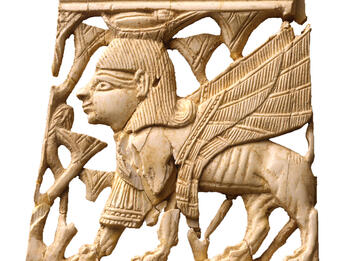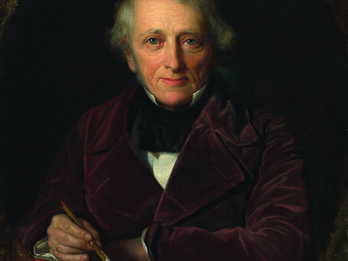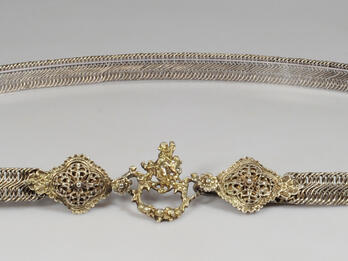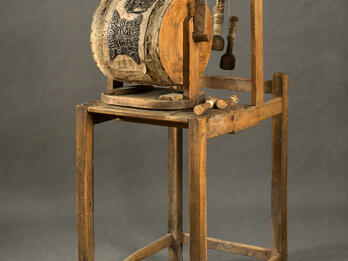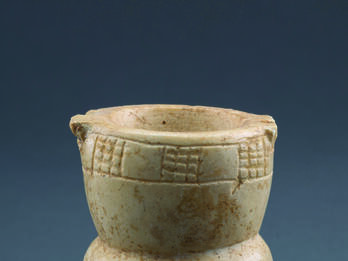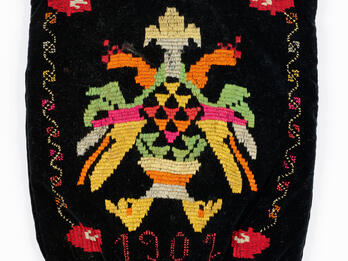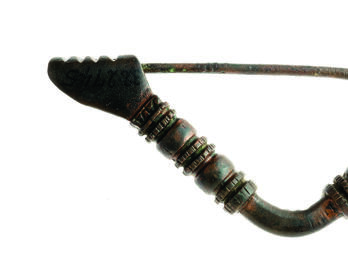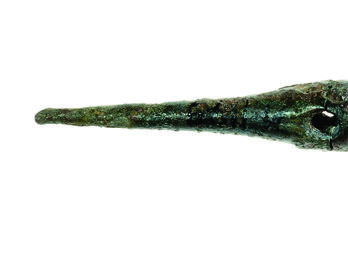Showing Results 1 - 9 of 9
Restricted
Image
Sphinxes are among the most ubiquitous images on Iron Age Levantine ivories. The sphinx combines the features of several animals; it has the head of a human, the wings of an eagle, and the body of a…
Places:
Samaria, Land of Israel (Samaria, Israel)
Date:
Iron Age IIA–IIB, 9th–8th Century BCE
Subjects:
Categories:
Restricted
Image
Leo Lehmann (1782–1859) was the father of the popular portrait artist Rudolf Lehmann. Here he depicts his father, a painter and printmaker (and his son’s first art teacher) at work, with the tools of…
Contributor:
Rudolf Lehmann
Places:
Ottensen, German Confederation (Ottensen, Germany)
Date:
1851
Subjects:
Categories:
Restricted
Image
Sivlonot were, traditionally, gifts from the groom to his bride before the wedding. German Jewish brides and grooms gave each other belts, which were then worn during the wedding ceremony, sometimes…
Contributor:
Artist Unknown
Places:
Holy Roman Empire (Germany)
Date:
17th Century
Subjects:
Categories:
Restricted
Image
Shpanyer-arbet (spun work) was the name for a type of decorative gold and silver lace that adorned yarmulkes, prayer shawls, and other Jewish ritual garments in Eastern Europe. It was woven on a…
Places:
Sasow, Russian Empire (Sasiv, Ukraine)
Date:
Late 19th–Early 20th Century
Subjects:
Categories:
Restricted
Image
This goblet-shaped cosmetic container of white limestone is from Hazor. The footed base, midsection with festoon pattern, and deep bowl with upper frieze of alternating checkerboard pattern form three…
Places:
Hazor, Land of Israel (Tel Hazor, Israel)
Date:
Iron Age II, 10th–6th Century BCE
Subjects:
Categories:
Restricted
Image
This velvet tefillin bag is embroidered on one side with images of flowers; the reverse side contains the date and the imperial double-headed eagle, a symbol of both the Austro-Hungarian and the…
Contributor:
Rachel Millman
Places:
Bessarabia, Russian Empire (Bessarabia, Moldova)
Date:
1907
Subjects:
Categories:
Restricted
Image
The fibula, which replaced the toggle pin during the Iron Age, is similar to a modern safety pin. It had a main bent section with a clasp, which was often elaborately decorated, and a simple straight…
Places:
Tell Beit Mirsim, Land of Israel (Tell Beit Mirsim, Israel)
Date:
Iron Age II, Early 10th–Early 6th Century BCE
Subjects:
Categories:
Restricted
Image
Toggle pins and fibulae were fasteners for garments, and because they were often decorated, they also functioned as jewelry. The toggle pin was a thick straight pin, ornamented on its upper part or…
Places:
Mizpah, Land of Israel (Tell en-Nasbeh, West Bank)
Date:
Iron Age I, 12th–10th Century BCE
Subjects:
Categories:
Restricted
Image
This limestone cosmetic bowl from Megiddo has mosaic decoration around the rim. It consists of alternating circular and bud-shaped inlays of blue and brown glass. Some are now missing. The central…
Places:
Megiddo, Land of Israel (Tel Megiddo, Israel)
Date:
Iron Age II, 8th–7th Century BCE


